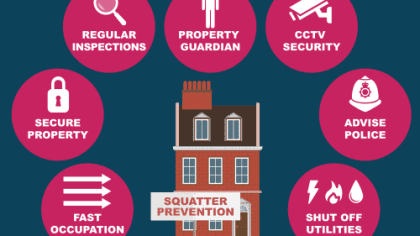In today’s world, finding economical and low-cost housing can feel like an impossible task, especially in urban areas with soaring rents and limited inventory. However, there are various options available for those seeking inexpensive housing solutions. From renting apartments to exploring alternative building methods, this guide explores a range of options to help you find a home that fits your budget.
Quick Summary
Navigating the housing market can be daunting, especially for those on a tight budget. However, this article will help you to explore low-cost housing options such as renting apartments, shared housing, affordable housing programs, and alternative building methods. Individuals can find housing solutions that fit their budget and lifestyle. From tiny houses to co-housing communities, there are numerous options available for those seeking affordable accommodation. By considering their needs, preferences, and financial situation, individuals can find the perfect home without breaking the bank.
Renting an Apartment
Renting an apartment is one of the most common housing options, offering flexibility and convenience without the long-term commitment of homeownership. However, finding affordable apartments in high-demand areas can be challenging, requiring careful budgeting and research. When searching for low-cost apartments, consider factors such as location, size, amenities, and proximity to public transportation. Look for neighborhoods that are up-and-coming or slightly outside of trendy areas to find more budget-friendly options.
Shared Housing and Roommates
Shared housing and roommates provide an opportunity to split housing costs with others, making it a more affordable option for individuals on a tight budget. By sharing rent, utilities, and other expenses, roommates can significantly reduce their housing costs while enjoying the benefits of communal living. When considering co-living arrangements, it’s essential to establish clear communication and boundaries with potential roommates. Discuss expectations regarding cleanliness, noise levels, and guests to ensure a harmonious living environment.
Affordable Housing Programs
Affordable housing programs play a vital role in providing housing assistance to low-income individuals and families who struggle to afford market-rate housing.
These programs, including Section 8 and Low-Income Housing Tax Credits (LIHTC), offer various forms of financial assistance to eligible applicants, making housing more accessible and affordable:
- Qualifying for Affordable Housing Programs: Eligibility criteria for affordable housing programs vary depending on the program and location. In general, applicants must meet income requirements based on their household size and income level. Income limits are typically set at a percentage of the area median income (AMI), with lower-income households receiving priority for assistance. Additionally, applicants must meet other eligibility criteria, such as citizenship status, background checks, and compliance with program rules.
- Application Process: To apply for affordable housing programs, individuals and families must submit an application to their local housing authority or designated agency. The application process may require documentation of income, household composition, and other relevant information. Applicants should contact their local housing authority or nonprofit organizations to inquire about available programs, application procedures, and deadlines.
- Navigating Affordable Housing Programs: Navigating the affordable housing application process can be complex, requiring patience, diligence, and attention to detail. It’s essential to gather all required documentation, follow application instructions carefully, and stay informed about program updates and deadlines. Applicants may also benefit from seeking assistance from housing counselors, nonprofit organizations, or legal aid services to navigate the application process successfully.
Affordable housing programs play a critical role in addressing housing affordability challenges and providing stable housing for low-income individuals and families. By offering rental assistance, subsidies, and tax incentives, these programs help make housing more accessible and affordable for those in need. If you or someone you know is struggling to afford housing, consider exploring available affordable housing programs and resources in your area.
Tiny Houses and Microapartments
Tiny houses and microapartments have gained popularity as temporary and inexpensive housing alternatives, offering compact living spaces that are more affordable and sustainable than traditional homes. These small-scale dwellings prioritize efficiency and simplicity, allowing residents to live comfortably while minimizing costs. When considering temporary accommodation options like tiny houses or microapartments, evaluate your space and storage needs carefully. While these housing options can be cost-effective, they may require downsizing and minimalism to make the most of the available square footage.
Mobile Homes and Manufactured Housing
Mobile homes and manufactured housing provide an affordable housing solution for those looking to own their home without the high costs associated with traditional homeownership. These low-cost housing options offer flexibility and affordability, making them an attractive option for many families. When purchasing a mobile home or manufactured housing, research local regulations, financing options, and maintenance requirements. Additionally, consider factors such as location, community amenities, and resale value when choosing a mobile home park or community.
Rent-to-Own Homes
Rent-to-own homes provide an alternative route to homeownership, particularly for individuals who may face challenges qualifying for conventional mortgages due to credit issues or insufficient down payments.
In a rent-to-own arrangement, tenants have the opportunity to rent a home or apartment with the option to purchase it at a later date, typically after a specified lease period.
- How Rent-to-Own Works: In a rent-to-own agreement, the tenant agrees to rent the property for a fixed term, usually ranging from one to three years. During this period, a portion of the rent may be credited toward the future purchase of the property, allowing tenants to build equity over time. At the end of the lease term, tenants have the option to buy the property at a predetermined price, which is typically set at the beginning of the agreement.
- Advantages of Rent-to-Own: Rent-to-own arrangements offer several benefits for prospective homebuyers. First, they provide an opportunity to build equity while renting, as a portion of the rent goes toward the eventual purchase of the property. Additionally, rent-to-own agreements allow tenants to lock in a purchase price upfront, protecting them from potential price increases in the housing market. For individuals with less-than-perfect credit or limited savings, rent-to-own can be a viable path to homeownership without the immediate need for a large down payment.
- Considerations Before Signing: Before entering a rent-to-own agreement, it’s essential to thoroughly review the terms and conditions outlined in the contract. Pay close attention to details such as the purchase price, lease duration, option fee, and any rent credits applied toward the purchase. Work with a real estate agent or attorney experienced in rent-to-own transactions to ensure the agreement is fair, transparent, and legally binding. Additionally, consider factors such as the condition of the property, neighborhood, and future market trends before committing to a rent-to-own arrangement.
- Potential Risks: While rent-to-own can offer a path to homeownership for some individuals, it’s essential to be aware of potential risks associated with these agreements. For example, if tenants are unable to secure financing or qualify for a mortgage at the end of the lease term, they may forfeit their option fee and any rent credits accumulated toward the purchase of the property. Additionally, tenants may face challenges if the property decreases in value or requires significant repairs during the lease period. It’s crucial to weigh the pros and cons carefully and seek professional advice before entering a rent-to-own agreement.
Rent-to-own homes can provide a pathway to homeownership for individuals who may not qualify for traditional mortgages or prefer a more flexible approach to buying a home. By carefully reviewing the terms of the agreement and seeking expert guidance, tenants can make informed decisions and take steps toward achieving their homeownership goals. If you’re considering a rent-to-own arrangement, be sure to conduct thorough research, ask questions, and explore all available options before making a commitment.
Co-Housing Communities
Co-housing communities are intentional communities where residents actively participate in the design, management, and maintenance of their neighborhood. By sharing resources and responsibilities, co-housing residents can reduce housing costs while fostering a strong sense of community. When considering co-housing communities, visit potential neighborhoods to meet residents, tour common areas, and learn about community rules and expectations. Evaluate whether the community’s values and lifestyle align with your preferences before committing to co-housing.
Low-Income Housing Options
Low-income housing options, such as public housing and subsidized housing developments, provide affordable housing for individuals and families with limited financial resources. These programs offer rental assistance and affordable housing units to eligible applicants based on income and other criteria. To apply for low-cost housing options, contact local housing authorities or nonprofit organizations that administer affordable housing programs. Be prepared to provide documentation of income, household size, and other eligibility requirements during the application process.
Alternative Building Materials and Methods
Exploring alternative building materials and methods, such as recycled materials, earthbag construction, and modular building systems, can help reduce construction costs and make housing more affordable. These innovative approaches prioritize sustainability and affordability, offering creative solutions to the housing affordability crisis. When considering alternative building materials and methods, research local building codes, zoning regulations, and permit requirements. Work with experienced architects, contractors, and engineers to ensure your project meets safety standards and regulatory requirements.
Creative Ways to Reduce Housing Costs
Finally, there are various creative ways to reduce housing costs, such as downsizing, negotiating rent, and exploring unconventional living arrangements. By thinking outside the box and being resourceful, individuals can find affordable housing solutions that meet their needs and budget. Consider downsizing to a smaller home or apartment/studio to reduce housing costs and minimize maintenance expenses. Negotiate rent with your landlord to potentially lower your monthly housing expenses or negotiate lease terms, such as lease duration or included utilities, to save money.





